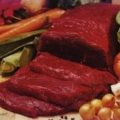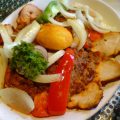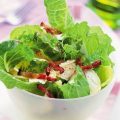National coffee traditions speak volumes about the countrymuch more than it might seem at first glance. A little imagination - and you will most likely find some correspondence between Italian ardor and burning espresso (unless, of course, this is the effect and cause), the Italian idea of dolce vita and the foamy deity of cappuccino, French restraint and laconic café au lait, Austrian sophistication and the pretentious coffee variations of the imperial ... A few words in the coffee lexicon Decaffeinated coffee - café descafeinado With hot milk - сon leche caliente With warm milk - con leche templada With cold milk - сon leche fria Sugar substitute - sacarina Coffee in a cup - café en una taza With ice - сon hieloMy first encounter with Spanish coffee took place on the island of Tenerife, and I can’t remember it without shuddering. In a decent-looking establishment, instead of the cappuccino I ordered, they brought me black (and rather unpleasant-tasting) coffee with a cap of whipped cream, obviously squeezed out of a can. It’s hard to imagine a greater blasphemy, so for some time Spanish coffee was put to rest. And it was rehabilitated only a few years later in Andalusia, whose coffee traditions are worthy of the most detailed conversation, as is the coffee itself. However, the Canary Islands lesson should not be forgotten in mainland Spain either. Never order a cappuccino here – they will bring you swill! In Andalusia, they drink coffee with milk and coffee with alcohol. It is served not in cups, but in glass cups. Because of which, out of habit, you constantly burn your fingers and curse the people who, having invented such a strange way to drink coffee, did not think about cup holders. However, coffee cups are not an empty whim. They have an important mission. In Andalusia, there are eight types of coffee with milk - and they differ in the ratio of coffee to milk and, accordingly, the shade of coffee color that you can admire through a transparent glass.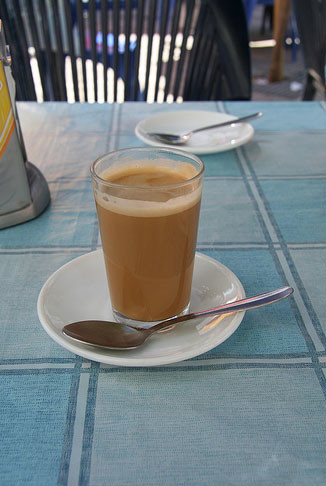 You can drink coffee with milk. So, 8 Andalusianmilky coffee varieties: 1. Largo - at least 80% of coffee and quite a bit of milk2. Semi largo - 70% of coffee, milk is slightly more than 3. Solo corto - 60% coffee4. Mitad - coffee and milk equally. Entre Corto - 40% coffee, milk begins to prevail6. Corto - 30% coffee and two thirds of milk, the most popular morning variant7. Sombra - 20% coffee, the rest is milk8. Nube - only 10% of coffee, very delicate taste. If you do not want coffee with milk, order a café solo. It is highly recommended to try at least half of the types of coffee from our list. You will be surprised to find how noticeably an extra drop of milk affects the taste of the drink, and that only one you really like. Returning to the beginning of our article - how does this characterize the national character of the Spaniards? It seems to me that coffee thoroughness testifies to the value of human individuality. Each unique personality has its own coffee with milk! For special occasions (where the locals consider a morning hangover) is karahiyo (carajillo), coffee with alcohol. When ordering karahiyo, specify - con coac (with brandy), con ron (with rum), con anis (with anise tincture).
You can drink coffee with milk. So, 8 Andalusianmilky coffee varieties: 1. Largo - at least 80% of coffee and quite a bit of milk2. Semi largo - 70% of coffee, milk is slightly more than 3. Solo corto - 60% coffee4. Mitad - coffee and milk equally. Entre Corto - 40% coffee, milk begins to prevail6. Corto - 30% coffee and two thirds of milk, the most popular morning variant7. Sombra - 20% coffee, the rest is milk8. Nube - only 10% of coffee, very delicate taste. If you do not want coffee with milk, order a café solo. It is highly recommended to try at least half of the types of coffee from our list. You will be surprised to find how noticeably an extra drop of milk affects the taste of the drink, and that only one you really like. Returning to the beginning of our article - how does this characterize the national character of the Spaniards? It seems to me that coffee thoroughness testifies to the value of human individuality. Each unique personality has its own coffee with milk! For special occasions (where the locals consider a morning hangover) is karahiyo (carajillo), coffee with alcohol. When ordering karahiyo, specify - con coac (with brandy), con ron (with rum), con anis (with anise tincture).
Café Central - the oldest coffee house in Malaga
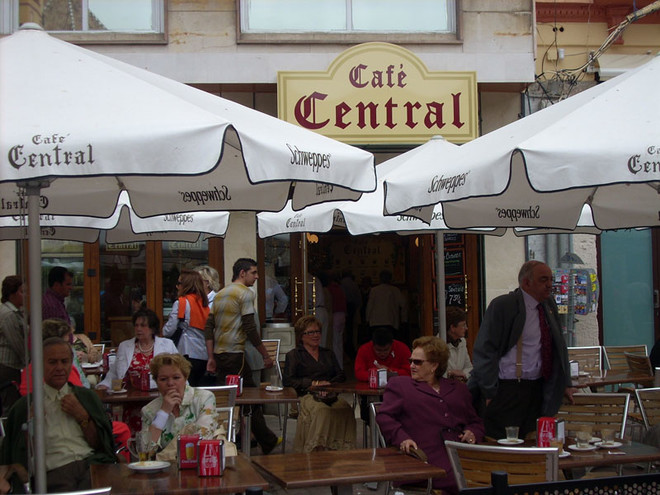
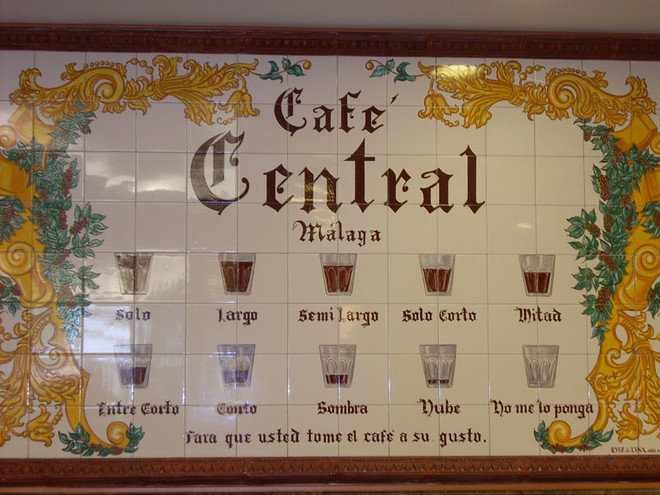
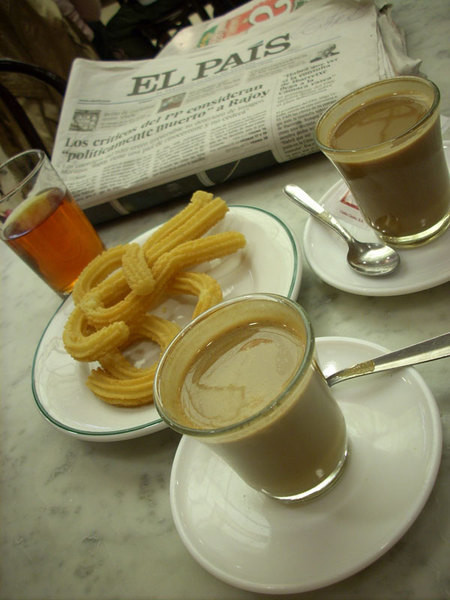 This small, but at peak time is very crowdedA coffee shop in the center of Málaga is the most famous place for coffee parties in Andalusia. The interior of Café Central is very modest and even a little catering. The main decoration is a wall mosaic, clearly depicting variations of Andalusian coffee with milk. The waiters rush here like mad, so it’s quite difficult to catch them, only perseverance and tenacity guarantee you quick service. It is better to come here in the morning (before noon), then, in addition to excellent coffee, you can order churros - delicious sticks of salted dough, fried in deep fat. They bring coffee according to the rules - black, in a glass cup and, having already placed it in front of you, camamero will pour milk from a jug, which it does not part with at the workplace.
This small, but at peak time is very crowdedA coffee shop in the center of Málaga is the most famous place for coffee parties in Andalusia. The interior of Café Central is very modest and even a little catering. The main decoration is a wall mosaic, clearly depicting variations of Andalusian coffee with milk. The waiters rush here like mad, so it’s quite difficult to catch them, only perseverance and tenacity guarantee you quick service. It is better to come here in the morning (before noon), then, in addition to excellent coffee, you can order churros - delicious sticks of salted dough, fried in deep fat. They bring coffee according to the rules - black, in a glass cup and, having already placed it in front of you, camamero will pour milk from a jug, which it does not part with at the workplace.





